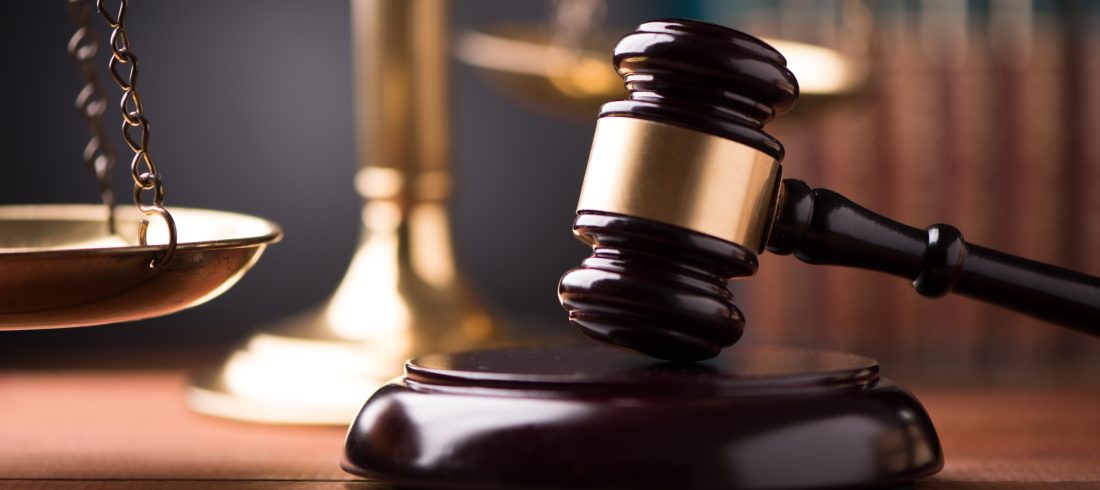Introduction
1 The purpose of this article is to comment on the “new look” summary judgment procedure whereby summary judgment is sought after filing of a plea, and no longer after entry of appearance to defend.
2 Summary judgement is a procedure that enables a plaintiff to obtain judgment against a defendant without the necessity of going to trial when a defendant has no defence to a claim based on a liquid document, for a liquidated amount of money, for delivery of movable property, and for ejectment. Strict compliance with the requirements imposed by the Rule, is essential.
3 The remedy was imported from England where it was introduced under the Judicature Acts.[1] In South Africa the remedy was first introduced into Magistrates’ Court practice by Rule 14,[2] and in High Court practice in the Cape Colony,[3] the Transvaal,[4] and possibly the Free State[5] where it was envisaged that the Court could use its inherent jurisdiction to set aside an entry of appearance to defend that was mala fide, and then enter judgment for a plaintiff.
4 On 15 January 1965 the Rules in the Superior Courts were harmonized when the Uniform Rules[6] came into force. Rule 32 now provided for summary judgment in all the Provinces.
5 The constitutionality of the procedure was confirmed by the Supreme Court of Appeal in the Joob Joob Investments case.[7] Navsa JA said:
[32] The rationale for summary judgment proceedings is impeccable. The procedure is not intended to deprive a defendant with a triable issue or a sustainable defence of her/his day in court. After almost a century of successful application in our courts, summary judgment proceedings can hardly continue to be described as extraordinary. Our courts, both of first instance and at appellate level, have during that time rightly been trusted to ensure that a defendant with a triable issue is not shut out. In the Maharaj[8] case at 425G – 426E, Corbett JA was keen to ensure, first, an examination of whether there has been sufficient disclosure by a defendant of the nature and grounds of his defence and the facts upon which it is founded. The second consideration is that the defence so disclosed must be both bona fide and good in law. A court which is satisfied that this threshold has been crossed is then bound to refuse summary judgment. Corbett JA also warned against requiring of a defendant the precision apposite to pleadings. However, the learned judge was equally astute to ensure that recalcitrant debtors pay what is due to a creditor.
[33] Having regard to its purpose and its proper application, summary judgment proceedings only hold terrors and are ‘drastic’ for a defendant who has no defence. Perhaps the time has come to discard these labels and to concentrate rather on the proper application of the rule, as set out with customary clarity and elegance by Corbett JA in the Maharaj case at 425G – 426E.
The ‘new look’ Rule 32
6 Rule 32 was amended[9] with effect from 1 July 2019 by Government Notice R842 of 31 May 2019. Rule 32(1) to (4) now reads as follows:
(1) The plaintiff may, after the defendant has delivered a plea, apply to court for summary judgment on each of such claims in the summons as is only-
(a) on a liquid document;
(b) for a liquidated amount in money;
(c) for delivery of specified movable property; or
(d) for ejectment;
together with any claim for interest and costs.
(2)(a) Within 15 days after the date of delivery of the plea, the plaintiff shall deliver a notice of application for summary judgment, together with an affidavit made by the plaintiff or by any other person who can swear positively to the facts.
(b) The plaintiff shall, in the affidavit referred to in subrule (2)(a). verify the cause of action and the amount, if any, claimed, and identify any point of law relied upon and the facts upon which the plaintiff’s claim is based, and explain briefly why the defence as pleaded does not raise any issue for trial.
(c) If the claim is founded on a liquid document a copy of the document shall be annexed to such affidavit and the notice of application for summary judgment shall state that the application will be set down for hearing on a stated day not being less than 15 days from the date of the delivery thereof.
(3) The defendant may–
(a) give security to the plaintiff to the satisfaction of the court for any judgment including costs which may be given; or
(b) satisfy the court by affidavit (which shall be delivered five days before the day on which the application is to be heard), or with the leave of the court by oral evidence of such defendant or of any other person who can swear positively to the fact that the defendant has a bona fide defence to the action; such affidavit or evidence shall disclose fully the nature and grounds of the defence and the material facts relied upon therefor.
(4) No evidence may be adduced by the plaintiff otherwise than by the affidavit referred to in subrule (2), nor may either party cross-examine any person who gives evidence orally or on affidavit: Provided that the court may put to any person who gives oral evidence such questions as it considers may elucidate the matter.
[emphasis added]
7 Summary judgment is now applied for after the delivery of a plea, and not after entry of appearance to defend as in the past. A Court hearing the summary judgment application will then have the defendant’s plea and the affidavit resisting summary judgment before it together with the plaintiff’s summons and affidavit.
8 The new Rule is intended to level the playing field by requiring both the plaintiff and the defendant to commit to a version of the facts. Under the old rule, the defendant was required to put its defence up in an affidavit while the plaintiff was arguably not similarly burdened. The new Rule also requires practitioners to draft particulars of claim and the plea with more care than ever before.
Must the defendant’s affidavit resisting summary judgment be consistent with its plea?
9 Under the previous incarnation of the Rule the defences raised by a defendant in a summary judgment application often did not see the light of day in a plea. This brought into question the bona fides of the defences raised but by time a plea was filed there was nothing that could be done about it except in cross-examination.
10 Under the new Rule the plea comes first and the plaintiff is required in its affidavit to explain why the defence as pleaded does not raise any issue for trial. As a matter of logic, the plaintiff can only comply with this requirement when it knows what the defences outlined by the defendant are.[10]
11 It follows that the defendant may not raise defences in the affidavit resisting summary judgment that are not pleaded. In the words of Van Loggerenberg[11] –
the nature and grounds of the defence and the material facts relied upon therefore in the affidavit should be in harmony with the allegations in the plea. In this regard the plea should comply with the provisions of rules 18(4) and 22(2).
12 In this context the Superior Courts Task Team of the Rules Board for Courts of Law in their report of 2016 recommending changes to Rule 32 said:[12]
The best way of addressing these shortcomings[13] would seem to be to require the founding affidavit in support of summary judgment to be filed at a time when the defendant’s defence to the action is apparent, by virtue of having been set out in a plea. This course is better than allowing a replying affidavit to be filed (as was suggested by a report prepared a few decades ago by the Galgut Commission). Merely including provision for a replying affidavit would not address the problems with the formulaic nature of the founding affidavit, and the speculation inevitably contained therein.
In the event of a plaintiff applying for summary judgment after the delivery of a defendant’s plea, the plaintiff would be able to explain briefly in its founding affidavit why the defences proffered by the defendant do not raise a triable issue; and should indeed be required to do so in order that the question of whether there is a bona fide defence which is capable of being sustained could be considered by the Court in a meaningful way.
13 The defendant is therefore called upon to file a plea that sets out its defence, and in the summary judgment application to amplify the defence on affidavit to illustrate a bona fide defence to the action. In setting out the defence on affidavit, the defendant will not be restricted to the facta probanda of the case but will be entitled and expected to set out relevant facta probantia.[14]
14 A defendant is required to set out a defence with reasonable clarity and when the defence raised in the affidavit resisting summary judgment is inconsistent with the plea it cannot in the absence of an explanation for the inconsistency be said to be bona fide.[15]
15 The new Rule, like the old, does not provide for a replying affidavit and this is so for understandable reasons. When the defendant raises issues in the affidavit that are not dealt with in the plea the plaintiff has no opportunity to respond.
16 There is recent authority to the effect that a defendant is not precluded from amending its plea after an application for summary judgment is brought. The correct procedure then is for the application to amend the plea to be finalised first, and if the amendment were granted for the plaintiff to bring a fresh application for summary judgment in respect of the revised plea if so advised.[16] This is with respect correct. Henney J pointed out that there is nothing in Rule 28 that precludes a defendant bring giving notice of an amendment and then either filing amending pages if there is no opposition, or to bring an application for leave to amend if the amendment is opposed. [17]
17 The Courts will have to guard against abuse of the summary judgment process by defendants who might try to stave off summary judgment by giving a fresh notice of intention to amend in response to every summary judgment application. The correct way to do this when the plaintiff believes it can make out a case that there is an abuse of process is, I submit, to then enrol the summary judgment application with the application for leave to amend so that the Court can either grant leave to amend and postpone the summary judgment application with leave to the plaintiff to file a further affidavit dealing only with the new defences, or dismiss the application for leave to amend and then consider the summary judgment application on its own merits and on the existing papers.
The revised verification requirements that the plaintiff must comply with
18 The new Rule no longer requires the deponent to express an opinion as it did before. The Rule[18] now requires that the plaintiff or the deponents[19] must-
18.1 confirm that he or she can swear positively to the facts;
18.2 verify the cause of action and the amount, if any, claimed, and
18.3 identify any point of law relied upon and the facts upon which the plaintiff’s claim is based, and
18.4 explain briefly why the defence as pleaded does not raise any issue for trial.
19 The authorities under the superseded rule must be approached with circumspection.
J MOORCROFT
PRACTISING ADVOCATE, MEMBER OF THE JOHANNESBURG BAR
[1] See John Wallingford v The Director of The Mutual Society and Another (1880) 5 A.C. 685 (H.L.) 699 – 700, Sheppards v Wilkinson 6 T.L.R. 13, Jacobs v Booth’s Distillery Company 85 L.T.R. 263 (H.L.), Jones v Stone, 1894 A.C. 122, and Meek v Kruger 1958 (3) SA 154 (T) 156F-158.
[2] Made in terms of the Magistrates’ Courts Act 32 of 1944.
[3] Former Cape Rule 22.
[4] Rule 42bis of the Transvaal Rules, introduced in 1957.
[5] Sussman v Testa 1951 (2) SA 226 (O), Mostert v Von Hirschberg 1959 (3) SA 956 (O) 958.
[6] Government Notice R48 in Government Gazette 999 of 12 January 1965.
[7] Joob Joob Investments (Pty) Ltd v Stocks Mavundla Zek Joint Venture 2009 (5) SA 1 (SCA); [2009] 3 All SA 407 (SCA).
[8] Maharaj v Barclays National Bank Ltd 1976 (1) SA 418 (A).
[9] Cf Tumileng Trading CC v National Security and Fire (Pty) Ltd 2020 (6) SA 624 (WCC); [2020] JOL 47144 (WCC) for an analysis of the new Rule 32.
[10] Tumileng Trading CC v National Security and Fire (Pty) Ltd 2020 (6) SA 624 (WCC) paragraph 22; Van Loggerenberg, Erasmus: Superior Court Practice, RS15, 2020, D1-416. See also Raumix Aggregates (Pty) Ltd v Richter Sand CC and Another, and Similar Matters 2020 (1) SA 623 (GJ).
[11] Van Loggerenberg, Erasmus: Superior Court Practice, RS15, 2020, D1-416 to 416A.
[12] See the Task Team’s Memorandum to Role-Players in Respect of Proposed Changes to the Summary Judgment Rule (Rule 32), distributed under cover of a letter of the Secretary of the Rules Board for Courts of Law dated 27 June 2016 and quoted by Van Loggerenberg, Erasmus: Superior Court Practice, RS15, 2020, D1-384B.
[13] The Task Team identified shortcomings in the existing (pre-2019) Rule 32 pertaining mainly to the position of defendants.
[14] See McKenzie v Farmers’ Co-operative Meat Industries Ltd 1922 AD 16 23; Abrahamse and Sons v SA Railways and Harbours 1933 CPD 626 637; Evins v Shield Insurance Co Ltd 1980 (2) SA 814 (A) 838 – 839; Moaki v Reckitt & Colman (Africa) Ltd 1968 (3) SA 98 (A) 102B; Ascendis Animal Health (Pty) Ltd v Merck Sharp Dohme Corporation and Others 2020 (1) SA 327 (CC) paragraphs 50-53.
[15] Cf Breytenbach v Fiat SA (Edms) Beperk 1976 (2) SA 226 (T).
[16] Belrex 95 CC v Barday [2020] JOL 48872 (WCC) paragraph 33.
[17] Rule 28(1) to (5).
[18] Rule 32(2)(a) and (b).
[19] The plaintiff may file one or more affidavits, by the plaintiff or by any other persons who can swear positively to the facts.






